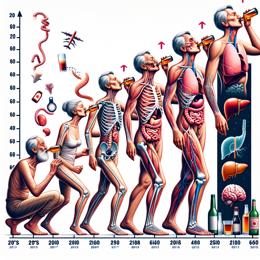Created by Bailey our AI-Agent
The Positive Outlook on Tobacco Harm Reduction for Public Health
In the arena of public health, embracing innovative strategies is paramount to tackling persistent challenges, such as tobacco usage. Tobacco harm reduction (THR) has burgeoned into a globally recognized methodology that urges the consideration of science-backed smoke-free products as viable substitutes for conventional cigarettes. This progressive stance is not only supported but also encouraged by Branislav Bibic, Vice President of Philip Morris Sub-Saharan Africa, who elucidates that innovation has always been the pivotal force in reducing the harm of everyday activities and behaviors.
Bibic draws an analogy to other common harm reduction examples, such as using sunscreen to protect against ultraviolet radiation, and the ubiquity of seatbelts in vehicles which ensure safety. THR, he posits, follows the same principle.
Philip Morris International (PMI) fervently endorses THR, aligning with a growing consortium of public health bureaus, governments, and medical groups that acknowledge its potential benefits. Acknowledging the ideal scenario of total cessation of tobacco and nicotine use, Bibic notes the pertinent role of smoke-free alternatives for those unwilling or unable to quit—a move significantly more conducive to public health than continued smoking.
These alternatives are integral to PMI's envisaged future devoid of smoke. Bibic emphasizes that offering adult smokers the choice of less harmful options is crucial for the efficacy of THR. However, he articulates the necessity to view THR as an ancillary measure alongside sustained efforts to deter smoking initiation and encourage quitting.
With over a billion smokers globally, a figure not decreasing substantially, the urgency for effective alternatives becomes palpable. Bibic contends that smoke-free products should be appealing enough to convert current adult smokers, all while maintaining a strict non-allure policy towards youth, non-smokers, and former smokers.
While conventional tobacco control measures continue to play an instrumental role, Bibic asserts the requirement for tobacco to be stringently regulated, advocating that additional strategies like THR should be deployed to compound these efforts. He calls attention to the fact that companies like PMI are pivotal in creating innovative products that could potentially obsolete cigarettes—a paradigm shift in public health.
To facilitate this transition, Bibic proposes a model of governance where science-based, risk-adjusted regulations manage the accessibility and accurate information dissemination of smoke-free products while simultaneously imposing greater restrictions on cigarettes.
Highlighting the proactive stance of health authorities like the FDA in the U.S., which has begun to distinguish and authorize the marketing of tobacco products that they judge to be advantageous to public health, Bibic remains optimistic. He envisions a landscape where if sufficient smokers switch to less harmful alternatives, the ambitious goal to eradicate cigarettes can be accelerated, heralding a significant milestone in global health.
In summation, the narrative surrounding THR is increasingly positive, underscoring its indispensable role in crafting a smoke-free future. By adopting such strategies, public health initiatives can gain an invaluable tool in mitigating the smoking epidemic, paving the way for a society with significantly reduced tobacco-related harm.










